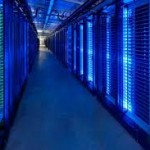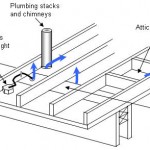The data centers house mission-critical applications and the first activity in building a data center is to select its location, which is important for providing the highly available and reliable services. The data center site selection should take following into consideration:
Geographic Factors
The site selection should take into consideration the following geographic factors: 
Natural Disaster
The natural disaster such as floods, tornados, hurricanes, and geological activities such as earthquakes and volcanic activity can disrupt the natural life. The site selected should be away from natural disaster prone areas. The data center located in natural disaster prone areas need to be designed to counter the hazard posed by the natural disaster. The facility can be built to withstand the hurricanes, tornados, floods and earthquakes. For example, the building housing Cisco’s data center at Allen, Texas has been designed to withstand winds up to 175 mph as area is susceptible to tornados. The volcanoes prone area should not be considered for data center location at all. However, the impact of the natural disaster on utilities and operations personnel should be taken into account while deciding the location. The normal power, water may not be available for many days in case of disaster and arrangement for suitable backup system should be there to maintain uninterrupted operation. The consideration should be given to the situation where operation personnel may not be able to reach the site due to flooding, storm, hurricane etc. for many days.
Man-Made Hazards
The man made hazards can also create disruption in data center operation. The data center should not be located in proximity to areas such as:
- Sites storing and manufacturing hazardous materials.
- Sites having Electromagnetic Interference or Radio frequency interference (EMI/RFI). The EMI/RFI interferes with operation of communication and data processing equipment. However, the EMI/RFI, if unavoidable, can be taken care of by providing suitable shielding of the room housing data center equipment.
- Targets that are susceptible to terrorist activity
Resource Availability
Utilities
Power
The availability of reliable power supply is one of the most important factors for data center operation. The power supply should be available from more than one sources/grid so that failure of one source/grid does not affect the system. The reliability of the power supply must be ensured while studying the feasibility. There should be sufficient space available for putting up on site power infrastructure such as diesel generators, UPS etc. to take care of any failures in main supply due to any reasons including natural disasters.
Internet connectivity
The availability of reliable Internet connection is must for a data center operation. The reputation of the carrier preferable with Tier 1 connection and availability of fiber optic backbone in the vicinity of data center should be taken into account while doing the site selection.
Other utilities
The availability of other utilities such as water, gas etc. should also be looked into.
Human resources
Data center operation requires the skilled manpower. The availability of manpower locally can reduce the cost of employees. Therefore, the data center should be located in an area where required manpower is readily available.
Emergency Services and Vehicle Access
The data center may need emergency services such as fire tenders, ambulance etc. and should be located so that these services can reach data center quickly without any hindrance. The data center operations require large number of heavy equipment to be installed. It is therefore necessary that the site selected should have proper access for the vehicles transporting this heavy equipment.
Other Considerations
- The location of data center within a building requires selection of the space that can cater to following requirements:
- The space for data center should be located away from damp areas.
- The building should be able to withstand the natural disasters that location has encountered during past hundred years.
- The data center requires light fixtures, air conditioning ducts, fire protection system, cable trays for carrying large amount of cabling, tall racks housing various equipment. This requires that the data center room should have adequate height to house various utilities.
- The facility design should be able to take the load of data center equipment.
- The facility should have sufficiently wide approach to data center room for carrying large and heavy equipment.
- The facility should have suitable space for housing UPS systems, HVAC systems, diesel generators and power substation equipment.
- The access to data center should be restricted in case of multi-tenant occupancy building.
- The space taken should take into account the expansions in future.
Things to keep in Mind while Planning & Designing Data Center
Sun Micro systems have provided few simple design guidelines for the data center. The design of data center should be done keeping following in mind:
Simple Design
The design should be simple so that it is understood properly by the operations of staff and can be managed easily. 
Flexibility
The design of data center should flexible enough to take into account future expansion plans, the quick changes in technology, changing customer requirements etc.
Design should be Modular –The modularity in design allows for quick expansion, easy trouble shooting, efficient management of data center.
Advance Planning – The data center implementation and expansion should be planned to avoid the slippages in deadlines and service level agreements (SLAs).
Capacity Determination – The capacity of data center should be determined based on number of RLUs (rack location units) required rather than using area.
Take Weight Requirement Seriously
The data center equipment such as Storage Devices and servers have become quite heavy. The data center design should take into account the load bearing capacities of supporting structures such as raised floors etc. The use of cast aluminum tiles, which are stronger than other type of tiles, may be considered. The use of perforated and grated aluminum tiles allows for cold air circulation in racks as well as provides sufficient strength.
Labeling
Labeling of all the equipment and most importantly the cable reduces maintenance time in case of any problems. It becomes easy to locate a faulty bad cable when it is properly labeled especially when the number of cables is large and most of it remains concealed.
Keep Things Covered
It is advisable to keep the things covered and out of sight. It is difficult to tamper a thing that cannot be seen.
Plan for the Worst
The data center planned for the worst-case scenario will never allow operator to get into the troubled or spring surprises.
Data Center Space and Layout
The data center design requires proper allocation of the space to take care of changing requirements and future growth. The deployment should provide a balance between the initial costs of deployment and anticipated future requirement. The planning should keep enough empty space for expansion plans. The TIA-942 standard provides facilities specifications for various functional areas of the data center. The standard allows placement of equipment based on hierarchical star topology design. The recommended design of functional areas allows for easy upgrade with minimal downtime. The TIA-942 recommendations specify following key function areas for a data center:
Entrance Rooms
The entrance room houses access provider’s equipment and provides interface to the building cabling system. The entrance room location can be inside or outside the main computer room. However, standard recommends that it should be housed outside the computer room for better security. The large Data Centers may require multiple entrance rooms to optimize the cable distances.
One or More Horizontal Distribution Areas (HDA)
Horizontal Distribution Areas (HDA) is distribution point for horizontal cabling. HAD contains cross-connects and other active equipment deployed for cable distribution in equipment area. The TIA-942 recommends that separate racks may be installed for fiber, coaxial and UTP cables. Recommendations specify collection of switches and path panels to minimize patch cord length and better cable management. Each HAD should have more than 2000 connections. More HDAs may be located for large data centers with more connections.
Equipment Distribution Area (EDA)
The cables coming from horizontal distribution areas are terminated in patch panels in Equipment Distribution Area. The standard specifies that the patch panel racks and equipment racks should be located in an alternating pattern for proper heat distribution.
Zone Distribution Area (ZDA)
The Zone Distribution Area is located between HAD and EDA. The ZDA can be used as consolidation point or for locating equipment that have no provision for accommodating patch panels such as freestanding mainframes etc. The ZDA is optional and within a horizontal cable run only one ZDA is allowed. Cross-connects or active equipment is not allowed to be located in ZDA.
Backbone and Horizontal Cabling
The Backbone cabling is used for connection between MDA, HDAs, and Entrance Rooms. The standard also specifies installation of optional backbone cable between HDAs for redundancy. The location of functional areas should such that the cable length for backbone as well as horizontal cabling remains within maximum permissible limits.
Standards for Building Data Centers
ANSI/TIA-942: Telecommunication Infrastructure Standards for data centers were published in 2005
ANSI/TIA 942 Addendum 1 (2008): Data Center Coaxial Cabling Specifications and Application Distances
ANSI/TIA‐606‐A‐1 (2008) : Addendum 1 — Administration of Equipment Rooms and Data Center Computer Rooms
ASHRAE TC9.9 (2009): Thermal Guidelines for Data Processing Environments, 2nd Edition
ANSI/TIA 942 Addendum 2 (2010): Additional Media and Guidelines for Data Centers
ISO/IEC 24764 (2010): Information Technology – Generic Cabling Systems for Data Centers
CENELEC EN 50173‐5 (2007): Information Technology – Generic Cabling Systems — Part 5: Data Centers
ANSI/NECA/BICSI 002-2010, Data Center Design and Implementation Best Practices: It complements the existing standards and covers topics such as security, site selection, site layout etc.
The post Data Center Location Selection appeared first on Data Center News, Trend, Analysis, Articles and Services.



















